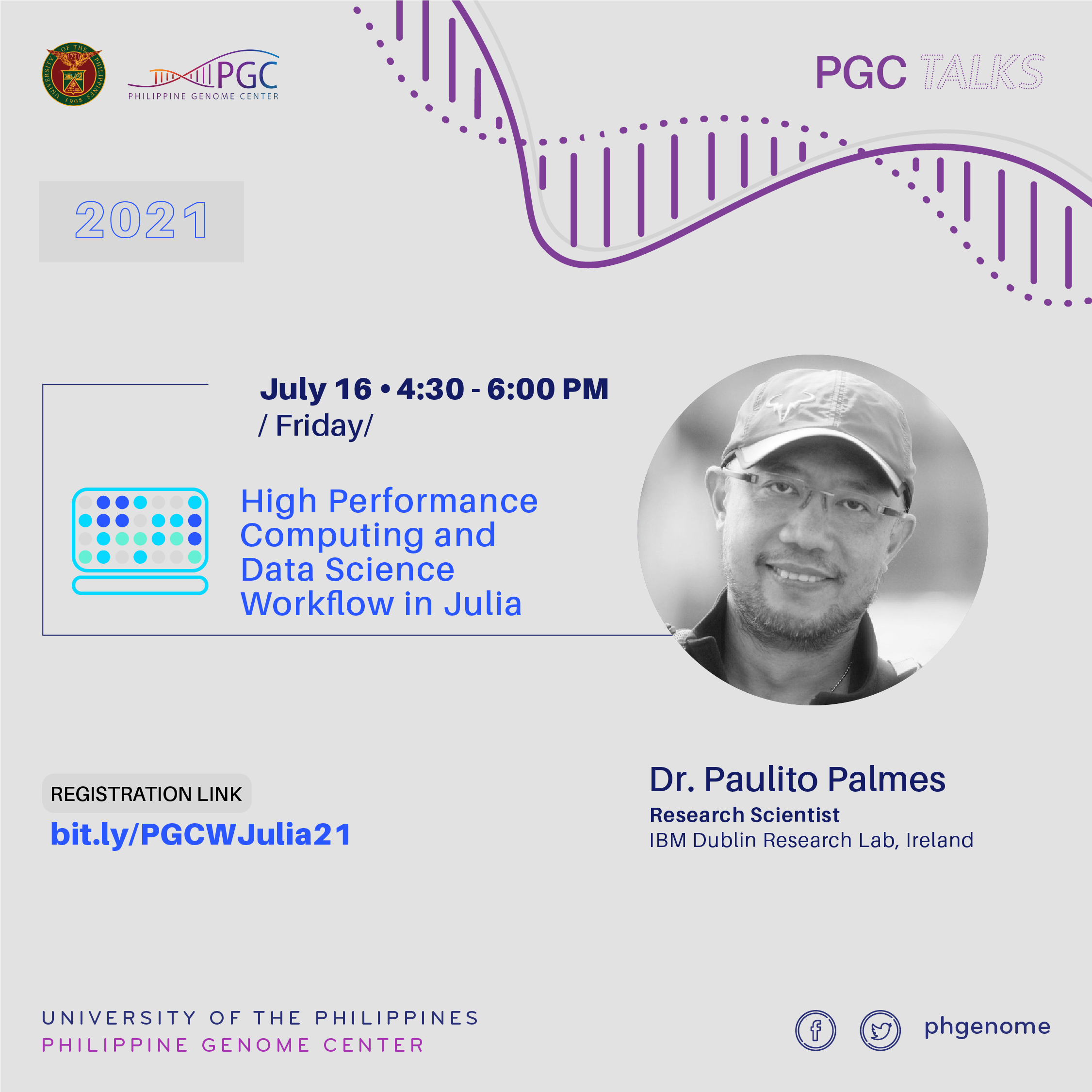
HPC and Data Science Workflow in Julia
#PGCTalks
Date: July 16, 2021, Friday, 4:30-6:00pm
This webinar is open to the public and registration is free.
Abstract
Julia is specifically designed from the start of its conception as a language for high-performance computation but at the same time highly interactive. To achieve this, Julia is one of the few modern languages that relies in just-in-time (JIT) compilation via LLVM to make its code run as fast or faster than statically compiled C and fortran codes. Its modern language design has the following features: multiple dispatch, Lisp-like macros, dynamic types, type inference, built-in parallel/distributed computing, lightweight threads, and elegant high-level language constructs.
Outline:
1. Introduction to Julia Language
2. High-performance computing in Julia
3. Julia in Data Science
4. Julia Interfacing with Python and R*

Dr. Paulito Palmes
Research Scientist IBM Dublin Research Lab, Ireland
About the speaker
I am a research scientist at the IBM Research Europe (Dublin Research Lab) working in the areas of analytics, datamining, machine learning, reinforcement learning, automated decisions, and AI.
I finished my Doctor of Engineering degree from the Toyohashi University of Technology in Japan (2005). I have a Master’s degree in Computer Science majoring in Artificial Intelligence (Ateneo de Manila University, 1995) and a Bachelor’s degree in Applied Mathematics (cum laude, valedictorian) at the University of the Philippines in the Visayas (1991).
I used to work as a technical staff for two years in the Neuroinformatics Lab of RIKEN Brain Science Institute, Japan. I worked as a Postdoctoral Fellow in the National University of Singapore and the National Neuroscience Institute working on diverse topics such as context-aware reasoning, datamining models for activity recognition in smarthome environment, detecting biomarkers for Parkinson’s Disease by image processing of fMRI and DTI images, and automated diagnosis of movement disorder for intelligent healthcare.
